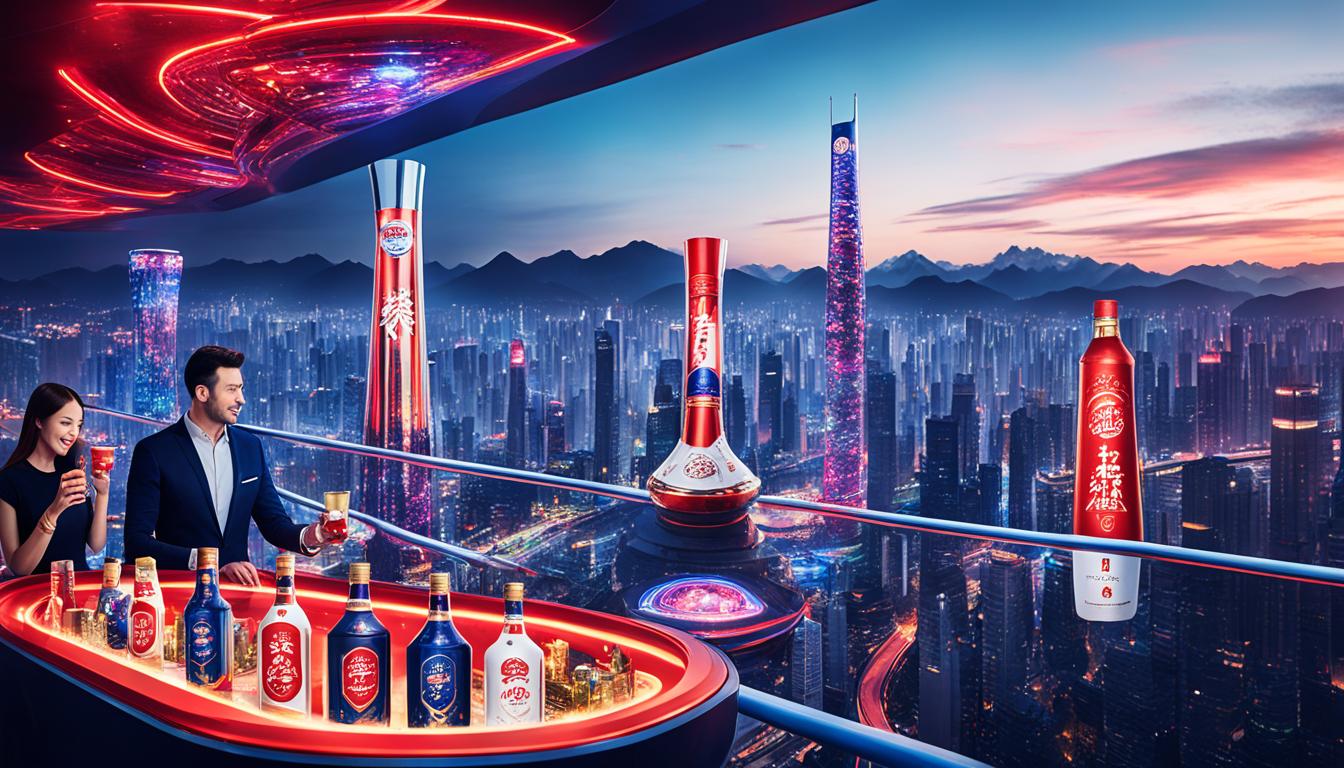Red Bull’s marketing strategy has been nothing short of remarkable in the highly competitive beverage industry. This case study delves into the key elements that have propelled Red Bull to the forefront of the market. From strategic brand positioning to innovative sponsorships and event marketing, this analysis uncovers the secrets behind Red Bull’s success.
Red Bull’s marketing approach encompasses various aspects that synergistically contribute to its global triumph. By understanding the importance of brand positioning, Red Bull has established itself as a leader in the industry. Leveraging sponsorships and event marketing, the brand has captivated audiences, while content creation and media channels have enabled it to engage with consumers on a deeper level. Additionally, Red Bull’s mastery of digital and social media marketing has allowed it to stay ahead of the curve.
Furthermore, Red Bull’s product packaging and branding have become iconic, standing out amidst a sea of competitors. Lastly, the brand’s grassroots marketing initiatives have proven successful in creating meaningful connections with consumers.
Key Takeaways:
- Red Bull’s marketing strategy encompasses brand positioning, sponsorships, content creation, digital marketing, and grassroots initiatives.
- Strategic brand positioning sets Red Bull apart from traditional soft drink brands.
- Sponsorships and event marketing have helped Red Bull create a strong brand image as a supporter of daring endeavors.
- Content creation and media channels allow Red Bull to engage its audience through captivating videos and films.
- Digital and social media marketing play a crucial role in Red Bull’s marketing approach.
Brand Positioning
Red Bull has masterfully positioned itself as more than just an energy drink. The brand has become a cultural phenomenon, synonymous with extreme sports, adventure, and an active lifestyle. By strategically aligning itself with high-performance activities and adrenaline-pumping events, Red Bull has successfully captured the attention of thrill-seeking consumers.
This bold brand positioning has allowed Red Bull to stand out from the competition and cement its status as a leader in the beverage industry. Unlike traditional soft drink brands, Red Bull has created a distinct image that resonates with its target audience. The brand’s association with extreme sports and athletes conveys a sense of energy, excitement, and living life to the fullest.
One of the key factors in Red Bull’s brand positioning strategy is its sponsorship of extreme sport events such as Formula 1 racing, air races, cliff diving, and snowboarding competitions. By aligning itself with these exhilarating events, Red Bull reinforces its brand identity and builds a connection with its audience on a deeper level.
Red Bull has carefully curated its brand image to appeal to adventurous individuals who are constantly seeking new experiences and pushing their boundaries. The brand’s messaging and marketing campaigns revolve around the idea of tapping into one’s inner potential and living life without limits. Through its strategic brand positioning, Red Bull has established itself as the go-to beverage for those who want to embrace an active lifestyle and pursue their passions.
Sponsorships and Event Marketing
Red Bull’s marketing strategy heavily relies on sponsorships and event marketing. As a brand known for its association with extreme sports, Red Bull sponsors and organizes a wide range of thrilling events that captivate audiences around the world.
One of Red Bull’s notable sponsorships is in Formula 1 racing. The brand supports several teams and drivers, showcasing its commitment to high-performance and adrenaline-fueled competition. By aligning with Formula 1, Red Bull not only gains global visibility but also establishes itself as a key player in the world of motorsports.
Furthermore, Red Bull has made a name for itself in the air racing scene. The brand sponsors and organizes events such as the Red Bull Air Race World Championship, where skilled pilots navigate challenging obstacle courses at breakneck speeds. These events not only thrill spectators but also provide Red Bull with valuable branding opportunities and exposure.
Another area where Red Bull excels in event marketing is cliff diving. The Red Bull Cliff Diving World Series showcases daredevil athletes plunging from dizzying heights into bodies of water worldwide. By sponsoring this thrilling series, Red Bull reinforces its image as a supporter of boundary-pushing endeavors while capturing the attention of adventure-seeking audiences.
In addition to these events, Red Bull also sponsors and organizes snowboarding competitions, giving athletes the platform to push the limits of their sport and showcasing Red Bull’s commitment to supporting extreme sports at all levels.
Overall, Red Bull’s sponsorships and event marketing initiatives not only enhance the brand’s visibility but also help create a strong brand image as a supporter of daring and boundary-pushing endeavors. The brand’s involvement in Formula 1 racing, air races, cliff diving, and snowboarding further solidifies its position as a leader in the world of extreme sports.
Red Bull’s Sponsored Events
| Event | Description |
|---|---|
| Formula 1 Racing | Red Bull sponsors and supports teams and drivers in the adrenaline-fueled world of Formula 1 racing. |
| Red Bull Air Race World Championship | Red Bull organizes and sponsors this thrilling air racing series that features skilled pilots navigating challenging obstacle courses. |
| Red Bull Cliff Diving World Series | Red Bull’s sponsorship and organization of cliff diving events showcases the bravery of athletes diving from dizzying heights. |
| Snowboarding Competitions | Red Bull sponsors and organizes snowboarding competitions, providing a platform for athletes to push the limits of the sport. |
Through its wide range of sponsorships and events, Red Bull continues to captivate audiences and solidify its position as a brand synonymous with extreme sports and adventure. These initiatives not only gain the brand visibility but also help cultivate a strong brand image as a supporter of daring and boundary-pushing endeavors.
Content Creation and Media Channels
Red Bull understands the power of captivating content and leverages various media channels to engage its target audience. The brand produces high-quality videos, documentaries, and films that showcase extreme sports and adventures, keeping viewers on the edge of their seats. By combining adrenaline-fueled visuals with compelling storytelling, Red Bull creates content that resonates with its audience’s sense of adventure and excitement.
This engaging content is distributed through Red Bull’s extensive network of media channels, reaching a wide range of viewers. The brand has its own media platform, Red Bull TV, where users can stream exclusive content related to extreme sports and adrenaline-pumping activities. Additionally, Red Bull utilizes popular video-sharing platforms like YouTube to share its captivating content with a broader audience.
Red Bull also understands the importance of social media in connecting with its target audience. The brand maintains an active presence on multiple social media platforms, leveraging platforms like Facebook, Instagram, Twitter, and Snapchat to distribute its content and engage with fans. Through strategic partnerships with influencers and athletes, Red Bull extends its reach and credibility in the digital sphere.
Furthermore, Red Bull doesn’t limit its media channels to just digital platforms. The brand also collaborates with traditional media outlets to maximize its content reach. By partnering with television networks, radio stations, and print publications, Red Bull ensures its adrenaline-fueled content reaches a diverse audience across various mediums.
Overall, Red Bull’s commitment to content creation and diverse media channels enables the brand to captivate its audience and maintain a strong connection with its fans. With a well-curated mix of high-quality videos, documentaries, and creative campaigns, Red Bull continues to inspire and excite its viewers around the world.
Examples of Red Bull’s Engaging Content
| Content Type | Title | Platform |
|---|---|---|
| Videos | Red Bull Rampage: The Evolution | Red Bull TV |
| Documentaries | Chasing the Midnight Sun | YouTube |
| Films | The Fourth Phase | Red Bull TV |
| Interactive Campaigns | Red Bull Mind Gamers | Social Media Platforms |
Digital and Social Media Marketing
Red Bull has established itself as a trailblazer in the realm of digital and social media marketing. By harnessing the power and reach of popular platforms such as Facebook, Instagram, Twitter, and Snapchat, Red Bull has successfully connected with its target audience. Through these channels, the brand shares captivating and action-packed content that resonates with its fans.
Red Bull’s social media presence is characterized by a diverse range of content, including adrenaline-inducing videos, user-generated content, and interactive campaigns. The brand actively encourages audience participation, fostering a sense of community and engagement. This strategy not only enhances brand loyalty but also attracts new consumers who are drawn to the excitement and energy associated with the Red Bull experience.
Another key aspect of Red Bull’s digital and social media marketing is its collaboration with influencers and athletes. By partnering with influential figures in the sports and entertainment industry, Red Bull expands its reach and credibility in the digital realm. These collaborations enable the brand to tap into the existing fan bases of these influencers, amplifying its message and connecting with new audiences.
| Platform | Number of Followers |
|---|---|
| 5 million+ | |
| 10 million+ | |
| 3 million+ | |
| Snapchat | 2 million+ |
These numbers are a testament to the effectiveness of Red Bull’s digital and social media marketing strategy. By leveraging these platforms, the brand has created a global community of Red Bull enthusiasts who actively engage with the brand and its content. The continuous growth of Red Bull’s online following is a testament to the brand’s ability to captivate and retain the attention of its target audience.
Product Packaging and Branding
Red Bull’s marketing strategy goes beyond its unique taste and energizing benefits. The brand’s iconic product packaging and branding are a vital component of its success. The instantly recognizable slim cans, adorned with a bold blue and silver design, have become synonymous with the Red Bull experience.
The strategic use of color, shape, and imagery in Red Bull’s product packaging reinforces the brand’s energetic and adventurous image. The slim design of the cans not only makes them convenient for consumers to carry but also sets them apart from competitors on store shelves. The vibrant blue color evokes a sense of energy, while the silver accents create a sleek and modern aesthetic.
The visual design of Red Bull’s packaging aligns perfectly with its target audience – young adults and millennials who crave active and adventurous lifestyles. By leveraging bold and edgy branding, the brand establishes a strong connection with consumers, capturing their attention and sparking curiosity.
Moreover, the iconic product packaging serves as a visual reminder of the brand’s values and promises. When consumers see the Blue and Silver can, they know they are about to embark on an invigorating experience. It acts as a seal of quality and authenticity, reinforcing the brand’s unmatched reputation in the energy drink market.
Red Bull’s Branding Strategies
Red Bull’s product packaging is just one element of its overall branding strategy. The brand’s messaging, imagery, and marketing campaigns all contribute to a cohesive brand identity that resonates with its target audience. The daring and adventurous spirit showcased in Red Bull’s packaging extends to its wider marketing efforts.
Through sponsored extreme sports events and adrenaline-pumping activities, Red Bull consistently reinforces its brand image as a supporter of high-performance endeavors. The synergy between Red Bull’s packaging and its messaging creates a memorable and immersive brand experience for consumers.
To understand the impact of Red Bull’s product packaging and branding on consumer perception, let’s take a look at some key statistics:
| Statistic | Data |
|---|---|
| Global annual sales of Red Bull | 7.5 billion cans |
| Revenue generated by Red Bull in 2020 | $7 billion |
| Percentage of consumers who recognize Red Bull’s packaging | 94% |
| Red Bull’s brand value in 2021 | $9.5 billion |
These compelling statistics highlight the significant impact of Red Bull’s product packaging and branding on its global success. The recognizable nature of the brand’s packaging has contributed to its widespread popularity and market dominance.
Innovative Packaging Designs
Red Bull’s commitment to innovation is not limited to its marketing strategies but also extends to its packaging design. The brand has continuously sought to enhance consumer experience through packaging technology.
One notable innovation is the introduction of the resealable “Red Bull Editions” cans. By incorporating a resealable lid, Red Bull taps into the evolving consumer preference for convenience and on-the-go consumption. This packaging variant has found great success, resonating with consumers who want the flexibility to consume their favorite energy drink at their own pace.
The introduction of limited edition packaging designs has also proved to be a successful branding strategy. Red Bull collaborates with artists and designers to create visually striking can designs, further reinforcing its brand identity as bold, vibrant, and contemporary.
Red Bull’s product packaging and branding are not just vessels for their energy drink; they are an integral component of their marketing strategy. The visual impact created by their iconic slim cans and bold design captures the attention of consumers and reinforces the brand’s energetic and adventurous image. This cohesion between packaging and brand messaging ensures that Red Bull remains a leader in the highly competitive energy drink market.
Grassroots Marketing
Red Bull’s marketing strategy goes beyond traditional methods, encompassing grassroots marketing tactics to create a local presence and forge deep connections with its target audience. By engaging with communities and supporting local athletes, Red Bull establishes itself as more than just an energy drink; it becomes an integral part of the local culture.
One of the key elements of Red Bull’s grassroots marketing approach is organizing localized events. These events range from adrenaline-fueled sports competitions to music festivals, providing unique experiences that resonate with consumers seeking excitement and adventure. By creating these experiences, Red Bull cultivates a sense of community and camaraderie among its audience, fostering a loyal following.
Red Bull also prioritizes supporting local athletes who embody the brand’s values and image. By partnering with rising stars in various sports, Red Bull not only provides them with the resources they need to thrive but also aligns itself with their success. This strategy creates a powerful association between the brand and the pursuit of excellence, further solidifying Red Bull’s position as a leader in the industry.
Building Connections Through Community Partnerships
In addition to event organization and athlete support, Red Bull establishes meaningful connections by partnering with relevant communities. This can involve collaborating with local businesses, cultural institutions, or non-profit organizations that share the brand’s values and target the same audience.
For example, Red Bull may partner with a local skate park to sponsor events, provide resources, and support the park’s development. By aligning itself with the skateboarding community, Red Bull effectively taps into an influential network of passionate individuals and gains credibility among enthusiasts who appreciate the brand’s commitment to their culture.
Furthermore, Red Bull leverages its grassroots marketing efforts to generate word-of-mouth promotion. By creating memorable experiences and forming authentic connections, the brand inspires consumers to share their positive experiences with others. This organic spread of positive sentiment not only amplifies Red Bull’s reach but also fosters a sense of community and belonging around the brand.
Red Bull’s International Marketing Strategy
Red Bull’s international marketing strategy has been instrumental in propelling the brand to global success. The company’s approach centers around understanding target audiences, crafting a compelling brand identity, and executing innovative campaigns that transcend borders. By adapting to local cultural contexts and implementing a multi-faceted approach that includes content creation, experiential marketing, social media mastery, and data-driven decisions, Red Bull has solidified its position as a leader in international marketing.
Understanding Target Audiences
A key element of Red Bull’s international marketing strategy is a thorough understanding of its target audiences. This involves identifying the specific preferences, aspirations, and lifestyles of consumers in different markets. By conducting in-depth market research and analysis, Red Bull tailors its messaging and campaigns to resonate with local audiences, ensuring maximum impact and relevance.
Crafting a Compelling Brand Identity
A strong brand identity is at the core of Red Bull’s international marketing strategy. The company has successfully positioned itself as a provider of energy, adventure, and excitement, aligning with the desires and aspirations of its target audience. Through consistent brand messaging, visual design, and storytelling, Red Bull has created a powerful brand that is instantly recognizable and emotionally resonant across diverse cultures.
Innovative Campaigns That Transcend Borders
Red Bull’s international marketing success can be attributed to its ability to execute innovative campaigns that transcend borders. The company leverages its understanding of local cultures to create captivating and culturally relevant campaigns that capture the attention of consumers worldwide. Whether it’s sponsoring extreme sports events, organizing unique experiences, or collaborating with influencers, Red Bull consistently pushes the boundaries of traditional marketing to engage its global audience.
A Multi-Faceted Approach
Red Bull’s international marketing strategy encompasses various elements to create a cohesive and impactful brand presence. Content creation lies at the heart of this approach, as the company produces high-quality videos, articles, and other media that appeal to its target audience’s interests and passions. Additionally, experiential marketing through events and activations allows Red Bull to connect with consumers on a personal level, fostering brand loyalty and advocacy. The brand’s social media mastery ensures a strong digital presence and enables two-way communication with its global fan base. Finally, data-driven decisions inform ongoing marketing efforts, allowing Red Bull to continually refine its strategies for optimal results.
Through its international marketing strategy, Red Bull has achieved remarkable success in establishing itself as a global brand. By understanding target audiences, crafting a compelling brand identity, executing innovative campaigns, and embracing a multi-faceted approach, Red Bull continues to engage and inspire consumers around the world.”
Tailoring Marketing to Target Audiences
As part of Red Bull’s international marketing strategy, the brand places a strong emphasis on understanding and catering to specific target audiences. In particular, Red Bull focuses on capturing the attention of young adults and millennials who are driven by a thirst for adventure, individuality, and a desire to push their boundaries.
To effectively engage with this target audience, Red Bull positions itself as more than just an energy drink. It taps into the aspirations and lifestyle choices of these individuals, positioning itself as the ultimate energy booster for their active and adrenaline-fueled pursuits.
Red Bull’s marketing approach aligns with the desires of this target audience for experiences that go beyond mere material possessions. By associating itself with extreme sports, daring stunts, and adventurous experiences, Red Bull resonates deeply with young adults and millennials who seek excitement and authenticity in their lives.
Through captivating storytelling, visually compelling content, and strategic partnerships with athletes and influencers, Red Bull effectively establishes a strong connection with its target audience. By forging this emotional bond, Red Bull becomes more than just a beverage – it becomes a lifestyle brand that fuels and empowers individuals to pursue their passions.
Understanding the Target Audience
Red Bull’s success lies in its ability to intimately understand the wants, needs, and values of its target audience. The brand invests in market research, data analysis, and consumer insights to gain valuable knowledge about the preferences and behaviors of young adults and millennials.
By staying up to date with the latest trends and cultural shifts, Red Bull continuously adapts its marketing strategies to remain relevant and appealing to its target audience. This includes leveraging digital and social media platforms, where young adults and millennials spend a significant amount of their time, to showcase engaging content and interact directly with consumers.
The tailored marketing approach that Red Bull employs allows the brand to create a unique and memorable experience for its target audience. By aligning its messaging, visuals, and activations with the aspirations and passions of young adults and millennials, Red Bull has been able to cultivate a strong and loyal following.
| Key Characteristics | Target Audience: Young Adults and Millennials |
|---|---|
| Age Range | 18-34 years old |
| Desires and Aspirations | Adventure, individuality, pushing boundaries, active lifestyle |
| Values | Authenticity, excitement, adrenaline, experiences |
| Preferred Channels | Digital and social media platforms |
By understanding the unique characteristics of its target audience and catering to their desires, Red Bull has established itself as a global leader in marketing. The brand’s ability to resonate with young adults and millennials through tailored marketing efforts has propelled it to success and solidified its position as a market leader in the beverage industry.
Key Elements of Red Bull’s International Marketing Strategy
Red Bull’s international marketing strategy incorporates several key elements that contribute to its global success. By implementing these strategies, Red Bull consistently engages with diverse audiences worldwide.
Content Creation
Red Bull’s content creation is a core component of its marketing strategy. The brand produces captivating and adrenaline-fueled videos, documentaries, and films that showcase extreme sports and adventures. Through visually stunning and emotionally engaging content, Red Bull creates a unique connection with its audience, inspiring them to embrace an active and adventurous lifestyle.
Experiential Marketing
Experiential marketing is another vital element of Red Bull’s international strategy. The brand sponsors and organizes a wide range of extreme sports events, which allow consumers to experience the thrill and excitement firsthand. By providing unique experiences, Red Bull not only solidifies its brand image but also establishes deep emotional connections with consumers all over the world.
Social Media Mastery
Red Bull’s mastery of social media plays a crucial role in its international marketing strategy. The brand leverages platforms like Facebook, Instagram, Twitter, and Snapchat to engage its target audience. By creating action-packed and shareable content, encouraging audience participation, and collaborating with influencers and athletes, Red Bull maximizes its reach across various social media channels.
Data-Driven Decisions
Red Bull’s data-driven decision-making sets it apart in the global marketplace. The brand utilizes advanced analytics tools to gather insights from consumer behavior data, campaign performance metrics, and market trends. This data-driven approach enables Red Bull to fine-tune its marketing strategies, optimize its content, and target specific demographics effectively.
By integrating these key elements into its international marketing strategy, Red Bull establishes itself as a leading brand in the energy drink industry, captivating audiences around the world.
Successful Campaigns That Span Cultures
Red Bull’s ability to create successful campaigns that resonate across different cultures is evident in their highly impactful initiatives such as the Red Bull Stratos jump and the Red Bull Soapbox Race.
The Red Bull Stratos jump, which took place in 2012, was a groundbreaking event that captured global attention. Austrian skydiver Felix Baumgartner ascended to the edge of space in a helium balloon and then jumped to earth, breaking several world records in the process. This daring feat showcased Red Bull’s commitment to pushing boundaries and pushing human limits. The entire world watched in awe as Baumgartner fearlessly descended through the stratosphere, capturing the imagination of people from all walks of life.
The Red Bull Soapbox Race is another prime example of a successful campaign that transcends cultural boundaries. This unique event allows participants to design and build their own non-motorized vehicles and race them downhill on a custom-made track. The race combines creativity, engineering, and a sense of adventure, attracting participants and spectators from around the globe. Each country that hosts the event infuses its distinct cultural elements into the race, making it a truly multicultural and exhilarating experience.
These campaigns from Red Bull exemplify their ability to adapt their messaging and activations to different cultural nuances while remaining true to their brand identity. They showcase the brand’s commitment to thrilling experiences and pushing the boundaries of what is possible.
Achievements of the Red Bull Stratos jump:
- Red Bull Stratos jump broke the record for the highest freefall jump, with Felix Baumgartner reaching an altitude of 128,100 feet.
- The jump set the record for the fastest freefall, with Baumgartner reaching a maximum speed of 843.6 miles per hour.
- Baumgartner became the first human to break the sound barrier without being in a vehicle.
Highlights of the Red Bull Soapbox Race:
- Participants from different countries bring their unique cultural flavors to the race, resulting in a diverse and exciting experience for both participants and spectators.
- The event showcases impressive creativity and engineering skills, as participants design and build their own non-motorized vehicles.
- The Red Bull Soapbox Race fosters a sense of camaraderie, competition, and community spirit, appealing to a wide range of individuals.
Conclusion
Red Bull’s international marketing strategy has been instrumental in its global success. By understanding the needs and desires of its target audiences, Red Bull has crafted a compelling brand identity and executed innovative campaigns that have captivated consumers worldwide.
One of the key strengths of Red Bull’s marketing strategy lies in its ability to adapt to local cultural contexts. By tailoring its messaging and activations to resonate with different cultures, Red Bull has built strong connections with consumers around the globe.
Additionally, Red Bull’s focus on creating engaging content and providing unique experiences has set it apart from its competitors. Its high-quality videos, documentaries, and films have kept audiences entertained while reinforcing the brand’s image and values.
Moreover, Red Bull’s effective use of social media and data-driven decisions has further amplified its marketing efforts. By leveraging popular platforms and collaborating with influencers, Red Bull has expanded its reach and established itself as a digital marketing leader.
In conclusion, Red Bull’s marketing strategy, marked by its adaptability, compelling content, unique experiences, social media mastery, and data-driven approach, has propelled the brand to global success. Through its innovative and customer-centric approach, Red Bull continues to inspire and energize consumers worldwide.






